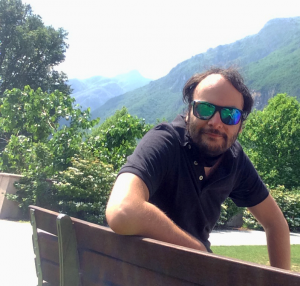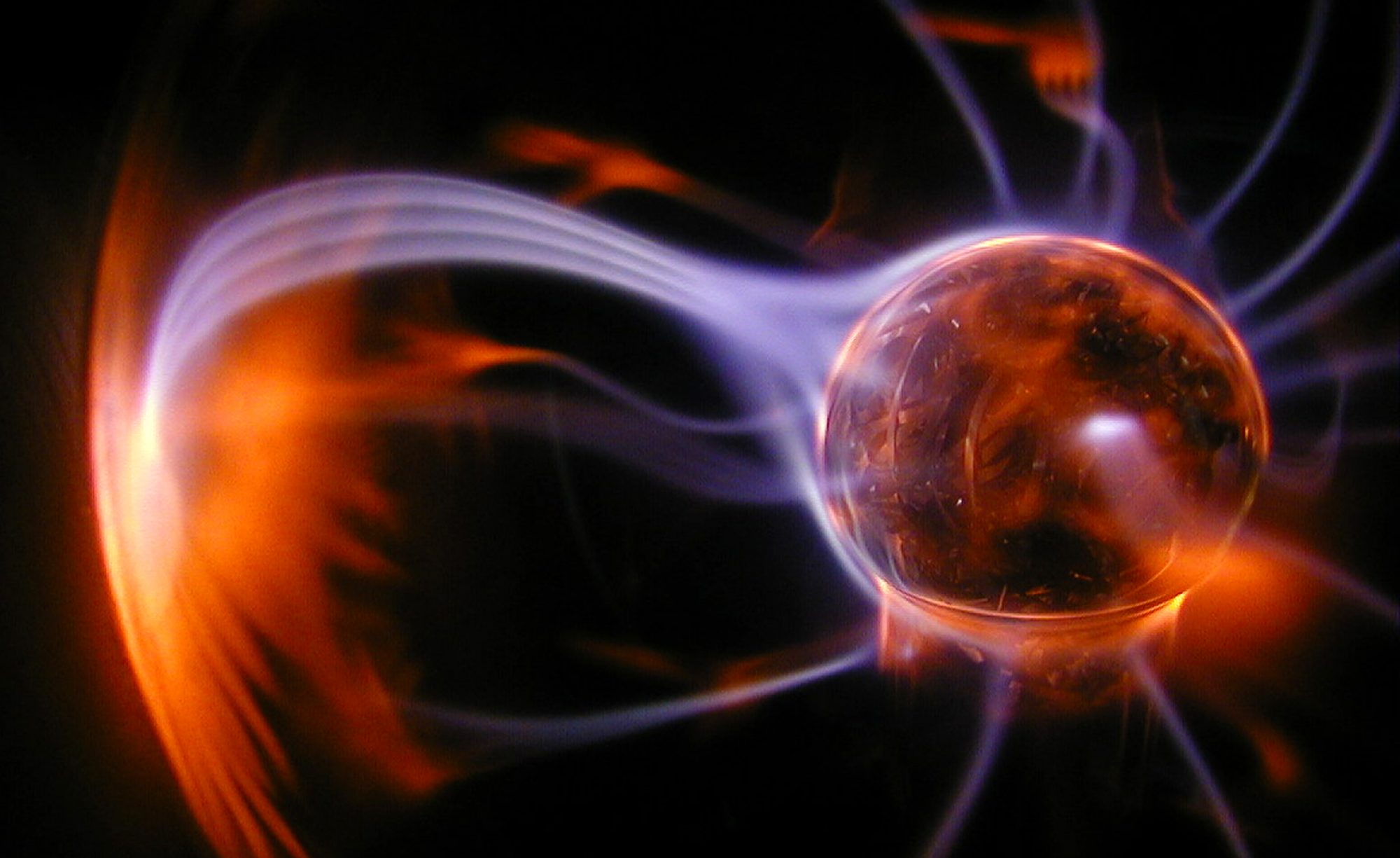 Ciao, my name is Antoine a physicist hailing from the Netherlands but currently living in the beautiful city of Trento in Italy and enrolled as ESR 11 in the PIONEER project. During my Bachelor and Master degrees at the University of Eindhoven (TU/e) I discovered both my interest in the physics of plasmas as well as my passion for investigating them in a laboratory. After a brief foray in nuclear fusion research during my Bachelor degree, I found an exciting project at the Plasma and Material Processing group of the TU/e during my Masters. I got involved with studying the dissociation of CO2 in a plasma environment using laser based techniques, by utilizing the phenomenon of Laser Induced Fluorescence.For this research topic I spent a lot of time fiddling in the lab to try to reconcile practical experimental considerations with the actual science that we were striving to perform. Along the way, I found my passion in this way of working as it allowed me to investigate not only the physics but allowed me to also explore, optimize and improve. During a beautiful afternoon enjoying the sun on an afternoon in April (a rarity in the Netherlands!) I was informed of an opportunity to pursue my research further within the PIONEER program. The rest, as they say, is history.
Ciao, my name is Antoine a physicist hailing from the Netherlands but currently living in the beautiful city of Trento in Italy and enrolled as ESR 11 in the PIONEER project. During my Bachelor and Master degrees at the University of Eindhoven (TU/e) I discovered both my interest in the physics of plasmas as well as my passion for investigating them in a laboratory. After a brief foray in nuclear fusion research during my Bachelor degree, I found an exciting project at the Plasma and Material Processing group of the TU/e during my Masters. I got involved with studying the dissociation of CO2 in a plasma environment using laser based techniques, by utilizing the phenomenon of Laser Induced Fluorescence.For this research topic I spent a lot of time fiddling in the lab to try to reconcile practical experimental considerations with the actual science that we were striving to perform. Along the way, I found my passion in this way of working as it allowed me to investigate not only the physics but allowed me to also explore, optimize and improve. During a beautiful afternoon enjoying the sun on an afternoon in April (a rarity in the Netherlands!) I was informed of an opportunity to pursue my research further within the PIONEER program. The rest, as they say, is history.
My work now involves investigating the time evolution of the cocktail of (excited) states that occur in a CO2 conversion plasma that is pulsed with a nanosecond duration with spectroscopic techniques.
| Overview |  |
| ESR: | 11 |
| Title: | Elucidating trends and transients in CO2 dissociation |
| Home Institution: | University of Trento (UNITN) |
| 1st Supervisor: | Paolo Tosi |
| Host Institution: | Eindhoven University of Technology (TU/e PMP) |
| 2nd Supervisor: | Richard Engeln |
| Industrial Partner: | ITRE |
| Industrial Contact: | Monica Secco |
| Defence: | April 19 2024 |
Abstract
Plasma-catalytic conversion of is seen as a promising approach to mitigate anthropogenic emissions and simultaneously provide storage for a transient surplus of renewable energy. Such storage technologies are a key challenge in the transition to an energy grid that is fully reliant on renewable, sustainable energy, by providing both short-term as well as seasonal storage.
The purpose of this dissertation is to – on occasion very literally -shine a light on processes that occur in non-thermal plasmas containing CO2, mostly for CO2 conversion.
In addition to that, it analyses trends in the field of plasma-catalytic CO2 conversion as a whole to evaluate the current state-of-the-art, but also presents a new platform for the community to contribute and collaborate on.
In Chapter 2 the evolution of emission from an atmospheric pressure nanosecond repetitively pulsed (NRP) discharge is investigated with optical emission spectroscopy (OES). From the Stark broadening of atomic oxygen and carbon lines, the electron density is measured as the discharge evolves from a breakdown phase to a spark phase, finding a peak density around 1×1018 cm-3.
In conjunction, the gas temperature is established from the N2 second positive system, finding it to be in excess of 2500K in the early post-discharge.
It furthermore explores the changes to these properties when operating in burst mode, where a subsequent pulse experiences a memory effect from the preceding one, which is conducive to efficient conversion.
Chapter 3 builds upon the findings from Chapter 2, by investigating the effect of the burst pulse modulation frequency on the achieved energy efficiency of CO2 conversion in an NRP discharge.
Crucially, using collisional energy transfer laser-induced fluorescence (LIF) and OES, it is shown that while most power deposition in the discharge occurs in the order of ten nanoseconds, CO2 dissociation occurs on a timescale beyond a microsecond.
This indicates that instead of direct electron impact, molecular-excitation kinetics play an important role under these conditions for CO2 dissociation.
By shortening the time between pulses in a burst, these mechanisms can be further enhanced, by prolonging the quasi-‘metastable’ state of the system.
In Chapter 4 the attention is shifted towards the plasma-surface interface region at low-pressure, by applying LIF to chart the evolution of the ground state OH radical density close to the surface in plasma-enhanced atomic layer deposition (PE-ALD).
PE-ALD is perhaps the quintessential process for plasma-surface interaction, where the role of highly reactive ions and radicals in the complex surface chemistry leaves open questions, due to the non-trivial detection of these short-lived species.
Since it is possible to measure the time-resolved relative ground state density with LIF, the technique presents an avenue to better understand transport of reactive species and reaction products near the surface, and how to relate these to measurements of excited states in the plasma bulk.
In point of fact, the OH radicals close to the surface appear to predominantly originate from diffusion from the plasma, where they are produced from dissociation of surface-reaction products, which themselves have diffused away from the surface.
The investigation of the plasma-surface interaction is also one of the main important avenues of investigation highlighted in Chapter 5.
In this chapter an open access database platform is introduced for the CO2 conversion community to easily cross-compare and contextualize experimental outcomes.
Based on the data already included in the database, a number of observations and recommendations can already be made about trends in the field.
Chief among these is a clear need in the field for a more fundamental understanding of plasma-catalysis interaction.
Such insight can only come from measurements that are performed in situ, rather than in the effluent, but this will require establishing techniques and criteria that are properly suited to test the synergy between the plasma and catalyst-complex.
If the premise is to exploit the non-equilibrium species that are produced in plasmas, it is furthermore paramount to account for the short lifetime of these plasma-produced species and how they can reach and interact with the catalyst.
Likewise, under exposure by a plasma, the catalyst structure can undergo modifications due to the plasma species and conditions present in the reactor, resulting in catalytic activity where it would normally not be expected.
Pending such developments, it remains evermore crucial to push for a more thorough description of experiment conditions and parameters, keeping in mind the overall necessity for cross-comparability of results.
To achieve this end, the database can prove a constructive way forward, since it encourages reporting a minimum set of parameters and attributes in a field of disparate experiments.
Contributions of newly published data to the database are therefore highly encouraged.
Links with other ESR
- ESR 2: Direct comparison of ns-discharges configuration and efficiency
- ESR 3, ESR 4: Comparison with the model results
Expected Results
- Setting-up specific laser-based diagnostics for time-resolved CO2 conversion.
- Setting-up specific laser-based diagnostics of transient species
- Optimisation of the ns discharge geometry and parameters
Secondments
- TU/e-PMP: Spectroscopic laser diagnostics
- ITRE:

